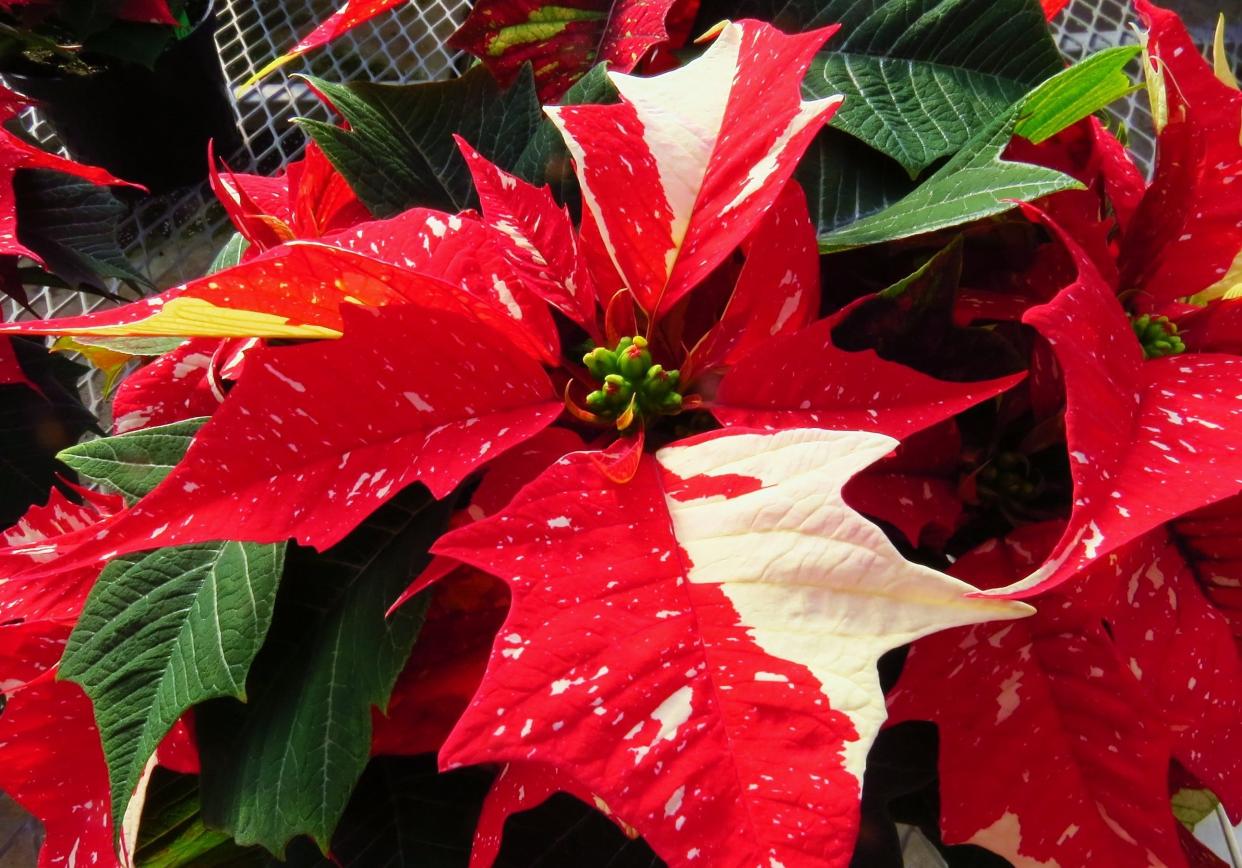Campbell Vaughn: Learn the stories behind your favorite Christmas plants and trees

My wife loves to decorate our house for Christmas. We have both been so busy with end-of-the-year work stuff that it has taken way more time than it should, but we do have a good Christmas setup for the holidays.
In years past, the question has been asked, “How many Christmas trees are we having this year?” I said “one” and that answer didn’t really seem to sit well, so we have negotiated it to more than two. They really do look great, and I am enjoying the holiday spirit, but I am not looking forward to de-Christmasing the house come Jan. 1.
What is it about certain plants that are so intimately tied to the holiday season? Well, I did some research.
A favorite Christmas song, “Deck the Halls”, is a Welsh melody that dates to the 16th century. As the song promotes, we are supposed to “deck the halls with boughs of holly.”
A bough is a large branch or even a main branch of a tree. Although the folks in the 1500s may have brought in large pieces of holly trees into the home, the history is really from a pagan culture.
In recognizing the shortest day of the year with something evergreen to lighten up these drab winter days, the pagans took cuttings of evergreens like holly, ivy, bay, fir, rosemary, laurel, boxwood and mistletoe. Holly, with its bright red berries and shiny green leaves, was perhaps the favorite Pagan ornamental.

Christian leaders tried without success to eliminate these pagan rituals and decorating customs without much success. If they couldn’t beat them, then they joined them, kind of. Christian clergy decided to convert the holly tree to Christianity by suggesting that the holly’s prickly leaves symbolized the crown of thorns and the crimson berries became the drops of blood on Christ’s brow. The holly’s ability to remain green all year long became a metaphor for eternal life after death.
Poinsettia (Euphorbia pulcherrima) is the most popular flowering potted plant sold in the United States with 35 million grown in greenhouses each year. Joel R. Poinsett was the first U.S. ambassador to Mexico and he collected and introduced the poinsettia to the Bartram Botanical Garden in Philadelphia in 1828. Robert Buist, a Philadelphia nurseryman and florist, saw the potential of the newly introduced poinsettia, and named it after Joel Poinsett.
The three original gifts of the Christmas season were brought to newly born Jesus according to the Gospel of Matthew and called the gift of the Magi. These wise men brought gifts of gold, frankincense and myrrh. We know gold doesn’t come from a plant, but did you know that frankincense and myrrh are byproducts of trees found in the Middle East and parts of Africa?
Frankincense comes from a tree that grows on the Horn of Africa and the Arabian Peninsula from various species of Boswellia. The Boswellia tree is a raggedy shrub with exfoliating bark that lives in the desert. The plant seems to thrive in the harshest of growing conditions.
The gift of frankincense itself is dried resin that comes from a wound in the plant. A manual cut is made in the bark and sap will then drip from the wound. The resin is then graded and then used to burn as a type of incense.
The plant from the genus Commiphora is also a desert dweller that uses its resin similarly, but the byproduct for this shrub is called myrrh.
This shrub is about 9 feet tall with knotty branches ending with sharp spines. The shrub has yellow-red flowers with small brown oval fruit. The oils that come out of the resin are used for incense, perfumes and holy ointments.
Campbell Vaughn: Asparagus is more than good eating. Also a nice addition to the landscape
There are many other historical holistic uses for the myrrh oils including being used for embalming as well as wound, swelling and inflammation treatments.
Since frankincense and myrrh were not native to the area of Bethlehem, these gifts were considered very precious.
Back in a time where families had to make their own fun, neighbors and relatives frequently visited each other for fellowship and did so especially during the holidays. A common tradition at Christmas-time was to hang a sprig of mistletoe above a door frame of the host family. During these gatherings, any female who lingered under the mistletoe might be subjected to a harmless kiss from nearby males. I can’t imagine this tradition ever got anyone in trouble.
And we certainly can’t miss out on the most famous holiday season plant, the Christmas tree. The first documented use of a tree for the winter holidays was in Riga, Latvia in 1510 to celebrate Christmas and New Year. It was most likely this eastern European inaugural tree was a type of fir although the Latvian word for a tree could also mean mast or pole.
At my house, with all the trees we have, I bet the kids probably think more trees means more presents? I better get to shopping.
This article originally appeared on Augusta Chronicle: Campbell Vaughn explains origins of Christmas trees and plants

